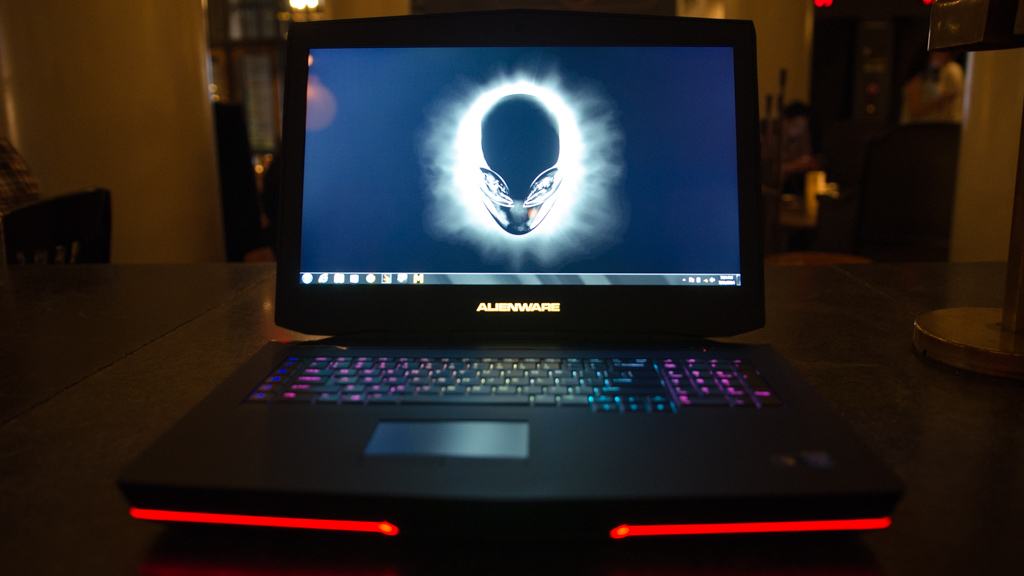Why you can trust TechRadar
With two top-tier GPUs and nearly the best mobile processor Intel has to offer, the Alienware should have the hottest graphical hearth ever put inside a laptop. As with desktop cards, adding on another GPU into a machine does not instantly mean double the performance. If anything, it's closer to a third more power, but the Alienware 18 still put up some of the best benchmark results I've ever seen.
Benchmarks
- 3DMark: Ice Storm: 156,702; Cloud Gate: 24,757; Fire Strike: 8,323
- Cinebench Graphics: 115.83 FPS, CPU : 722 cb
- PCMark 8 Home: 4,170 points
- PCMark 8 Battery Life: 1 hour, 57 minutes
- Bioshock Infinite: (1080p, Ultra): 111.84 fps; (1080p, Low): 291.57 fps
- Metro: Last Light: (1080p, Ultra): 26.67 fps; (1080p, Low): 109 fps
The Alienware 18 lives up to its legend and tallies up an amazing 8,323 points in the 3DMark Fire Strike test. This is hardly a fair fight, but these marks are more than double that of the AMD-equipped Alienware 17, which only scored 4,727 points with its Radeon HD R9 M290X chip. The EON17-S put up a bit more of fight, scoring 5,444 points with its single GTX 880M GPU.
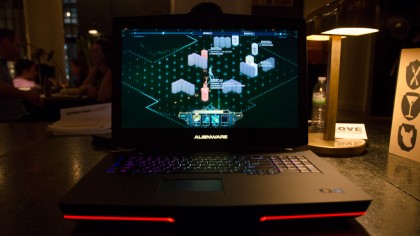
It's also clear that the higher-clock-speed CPU gives the Alienware 18 an extra edge. Alienware's big kahuna completed the Cinebench benchmark with a stellar performance, thanks to its Core i7-4910MQ chip. By comparison, the Intel Core i7-4700MQ tucked inside the smaller Alienware only tallied up 627 cb, and the i7-4810MQ-equipped EON17-S fared just slightly better with marks of 684 cb.
In terms of real-world gaming, all this power let me run Metro: Last Light at an almost playable 26.67 fps with all the graphical settings turned up. (Last Light, of course, tends to kick the crap out of gaming laptops no matter how powerful the GPU is.) Having two video cards allowed the Alienware 18 to pull ahead whereas the Alienware 17 only managed to render the game with a stuttery 14.33 fps on high, and the EON17-S averaged 18 fps.
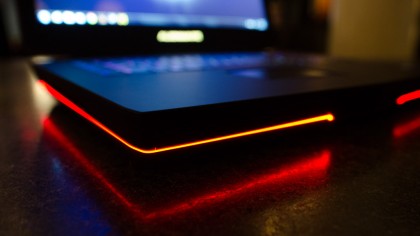
The Alienware 18 also performed handily; rendering both Wolfenstein: The New Order and Grid Autosport at a silky smooth 60 fps with maxed out settings. Assuming that games don't take a sudden graphical leap in the near future, the dual Nvidia parts should be able to keep up with the latest games for many years to come.
Short fuse
The dual video card system also (unsurprisingly) completely decimates battery life. The Alienware clocked in just a few minutes short of the two-hour mark in the PCMark 8 battery test. With regular use, the 18-inch rig only lasted for 2 hours and 11 minutes with the AlienFX lights show turned on, 17 tabs opened in Chrome, Spotify piping though the laptop speakers, and a short "work break" session of Transistor. The EON17-S takes the crown for the longest battery life with a still stunted 2 hours and 46 minutes. The Alienware 17 also lasted a tiny bit longer than its bigger brother, at 2 hours and 15 minutes.
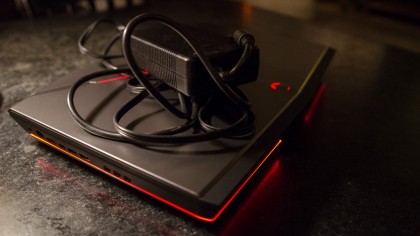
Switching over to the Intel chip's integrated graphics extends battery life on the Alienware 18 to a stingy three hours – just enough time to stream a movie on Netflix. Just don't expect to do much more than that. Even with a blazing fast Core i7, the laptop began to hitch with 20 image-heavy websites loaded into Chrome's cache.
Keyboard cat
In TechRadar's last run in with an Alienware machine, the keyboard left much to be desired, with an awkward raised platform due to the Alienware 17's own height. This time around the Alienware 18 raised the keyboard even farther up, but I found it to be a bit more comfortable. This is thanks to the the laptop's palm rests being so large that they act as a secondary desk. I still had to prop my wrists up and over the rig's tall frame to hit the keys, but it's not as painful an experience as we had with the Alienware 17.
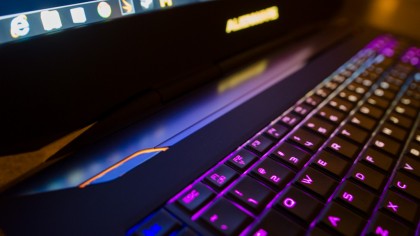
However, those who have used real mechanical keyboards with a rainbow of Cherry MX switches will be immediately put off by the mushiness of the Alienware 18's keys. The Dell-owned company prides itself on having an embedded keyboard, and it does offer some very deep travel. But ultimately, the keys were too soft for my liking.
Strainingly bright display
One other thing that makes Alienware's biggest offering a notable upgrade from its 17-inch model is a glossy-finished IPS (in-plane switching) screen. The Alienware 17 we tested earlier this year came with a matte-finished TN (twisted nematic) panel, and the blacks on the Alienware 18 were noticeably darker the instant I saw the screen.
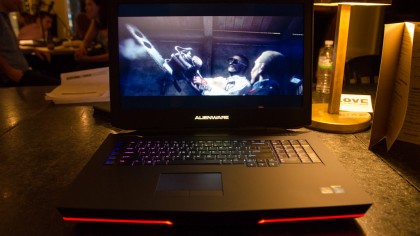
Still, it's not the best-looking IPS panel out of the box. Colors lack any real pop without calibration. In dark playing environments, the display's overly bright backlight is blinding even at lower settings. It's a strain to look at for extended periods, and washes out the blacks a bit.
Finally, at 18.4 inches, this panel also pushing the limits of how sharp 1080p appears when viewed up close. I can't see the individual pixels unless I stare intently into the display, but a screen of this size demands a larger pixel count than 1920 x 1080.
Bundled software
Storage space is precious on a gaming laptop, and Alienware has thankfully kept the bolted on software to a minimum. The Windows 7 Home Premium install only comes with a few Alienware-branded tools and they're all packed tightly into one small, unintrusive control panel package.
- AlienFX: This program allows users to customize the 10 distinct color zones on the Alienware 18 from the power LED, keyboard, to all the external strip lights.
- AlienTouch: Aside from the usual Synaptics touchpad options, Alienware has included its own software to fine tune the touchpad's sensitivity and disabling the input device when plugging in a mouse.
- AlienFusion: Essentially Alienware's version of power preferences, except with a fancier user interface.
- AlienAdrenaline: Allows users to create profiles for games, including unique AlienFX color schemes, toggling off extraneous applications and auto running any third-party VoIP clients.
- Alienware TactX: Macros! Every gamer needs them, and this built-in program will let users set their own personalized keystrokes and share them online as well.
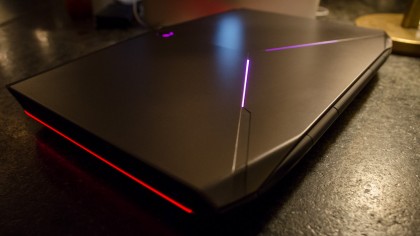
Kevin Lee was a former computing reporter at TechRadar. Kevin is now the SEO Updates Editor at IGN based in New York. He handles all of the best of tech buying guides while also dipping his hand in the entertainment and games evergreen content. Kevin has over eight years of experience in the tech and games publications with previous bylines at Polygon, PC World, and more. Outside of work, Kevin is major movie buff of cult and bad films. He also regularly plays flight & space sim and racing games. IRL he's a fan of archery, axe throwing, and board games.
